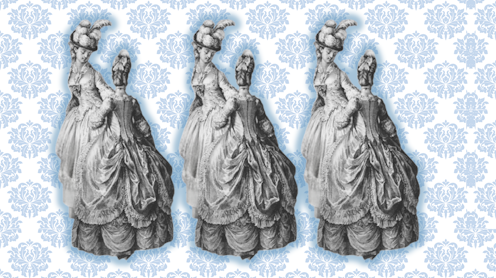Date:
Author: Danielle Mariann Dove, Surrey Future Fellow and Lecturer in English Literature, University of Surrey
Original article: https://theconversation.com/margot-robbies-wuthering-heights-dress-is-inaccurate-but-not-because-its-white-an-expert-explains-253461

The upcoming Wuthering Heights adaptation by Saltburn director Emerald Fennell has courted controversy since it was first announced, with Fennell’s choice of leading lady and man drawing internet critics.
Playing tragic heroine Catherine Earnshaw is the 34-year-old blonde Margot Robbie, and as tortured Heathcliff will be fellow Aussie, the 27-year-old Jacob Elordi. If you’re familiar with Emily Brontë’s 1847 novel then you know the ages, vibes and looks are just off.
Now online fans of the book are aghast in response to a series of leaked photographs of Margot Robbie wearing an elaborate white wedding gown.
Some were quick to point out the historical inaccuracy of the wedding gown, while others argued that “the tradition of a white wedding dress wouldn’t have come around until after the story took place”.
But is that really true? And what would Catherine Earnshaw have actually worn on her wedding day in the late-18th century?
Looking for something good? Cut through the noise with a carefully curated selection of the latest releases, live events and exhibitions, straight to your inbox every fortnight, on Fridays. Sign up here.
Most 18th-century brides would have probably worn their Sunday best on their wedding day. This was their finest day dress in the current fashion.
While it may have been an expensive dress, it wouldn’t necessarily have been a purpose-made wedding gown – unless the bride was very wealthy. Significantly, and unlike most wedding dresses today, the gown would also have been worn again on other social occasions.
Brontë tells us nothing about Cathy’s wedding clothes and very little about Cathy and Edgar Linton’s wedding day, which takes place in 1783. However, as the bride of a wealthy landowner she would likely have chosen to have a wedding gown specially made for the occasion in rich silk or satin.
The dress would have been a testament to her new family’s social standing. It would likely have featured a tightly fitted bodice with a low, round neckline characteristic of the period, a sash, and close-fitting, three-quarter length sleeves with a frill.
The wide skirts would have been open to reveal a longer petticoat underneath, or they might have been looped up with ribbons to form three layers in the popular “polonaise” style of the day.
By contrast, the wedding dress that Margot Robbie has been pictured wearing is much more reminiscent of the silhouette in vogue in 1840.
In fact, it appears to take direct inspiration from Queen Victoria’s wedding gown which she wore to marry Albert in February of that year – almost six decades after Cathy’s fictional wedding takes place. Like Queen Victoria’s wedding gown, Robbie’s features a similar off-the-shoulder neckline, short, puffed sleeves and a deep V-shaped bodice.
A white dress?
Queen Victoria is often credited with having started the trend for wearing a white wedding dress. But while she certainly helped to popularise the white gown in the 1840s, she was by no means the sole originator of the tradition. Women were married wearing white long before she chose to do so and they continued to marry wearing dresses of other colours long after.
In 1875, for example, the magazine Beeton’s Young Englishwoman advised one of its readers who wrote in asking for bridal fashion advice, that a grey wedding dress of “Japanese silk would be pretty”, and suggested a silk gown of “pale blue or pale mauve” which “would be useful afterwards”.
Contrary to popular belief that white wedding dresses were not in vogue until the Victorian period, white and silver were in fact the preferred colours for wedding gowns in the 18th century.
The preference for a white or silver wedding dress over a coloured gown can be seen in Oliver Goldsmith’s 1768 comedy play, The Good Natur’d Man, when Garnet, a lady’s maid, tells the soon-to-be married Olivia: “I wish you could take the white and silver [gown] to be married in. It’s the worst luck in the world, in anything but white.”
The historical inaccuracy of Robbie’s Wuthering Heights wedding dress stems not from its colour, then, but primarily from its problematic silhouette.
Of course, historical accuracy is not necessarily the end goal for film directors. Rather, Robbie’s anachronistic wedding gown appears to exemplify a broader trend in historical drama (think Bridgerton) towards a kind of strategic inaccuracy, in which producers and costume designers prioritise experimentation over strict fidelity to period detail.
For all we know, Fennell might have decided to set the adaptation around the time of the novel’s publication rather than its original late-18th and early-19th century setting. Even more intriguingly, she might be using the wedding dress to signal the adaptation’s more modern inflections.
Robbie’s wedding dress and cathedral-length veil wouldn’t look out of place at a contemporary wedding. Basque, or drop waist, wedding dresses dominated New York bridal fashion week in October 2024 and are poised to become a major trend in 2025 having been adopted by celebrities such as actor Millie Bobby Brown and podcaster Alex Cooper. Perhaps Fennell’s Cathy is just extremely fashion forward.
![]()
Danielle Mariann Dove does not work for, consult, own shares in or receive funding from any company or organisation that would benefit from this article, and has disclosed no relevant affiliations beyond their academic appointment.
